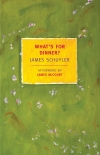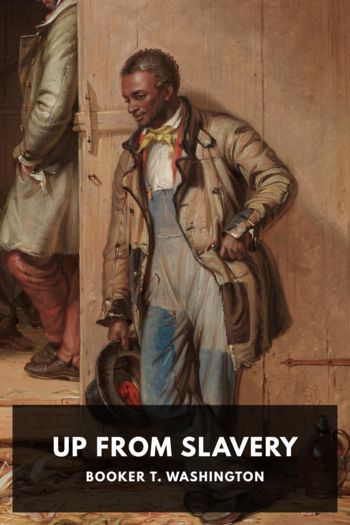What's for Dinner? James Schuyler (best inspirational books TXT) 📖

- Author: James Schuyler
Book online «What's for Dinner? James Schuyler (best inspirational books TXT) 📖». Author James Schuyler
Such work requires a protected setting, which is why What’s for Dinner? takes place almost entirely indoors, until its denouement forces everybody outdoors (in that bang-up finale) in an emergency which proves to be, if not a false alarm, then surely a theatricalized one. Apart from the somewhat delinquent, moonlighting Delehantey twins, the characters are either at home, institutionalized, or holed up in raffish cocktail lounges talking.
These complicated negotiations with regression and nostalgia are reflected in What’s for Dinner? in terms of both setting and characters. Schuyler loved New York passionately and was, as one of the quartet of “founding“ members of the “New York School“ and as a prolific art critic at the time of the city’s florescence as culture capital of the post-World War II world, in at the kill. (For no city assumes hegemony by the assent of its assembled peers, but rather by the successful campaign waged by its volunteer combatants on a field that is never level.) And yet there came a time when the city did not seem to love him back, and, after a couple of serious breakdowns and bouts of psychosis, he sought and was given sanctuary in the Southampton, New York, home of Fairfield Porter and his family.
What’s for Dinner? is not a suburban problem novel. Nobody in it commutes to a job in a nearby metropolis, they all live and work in the town. What’s more, nothing in it happens on a patio. Schuyler in fact never had any real experience of postwar suburban America. East Aurora had not been a suburb in the 1930s, when Schuyler was growing up there, but a small American town not yet subsumed into Greater Buffalo. Even when as a grown man he revisited it (the way he reports it in The Morning of the Poem and A Few Days) he did not think of it in suburban terms at all. Southampton, despite its colonization as a summer resort by the nouveau riche in the 1930s, was not yet suburban at the time of Schuyler’s residency, although it was poised on the brink, and in the next generation capitulated. Founded by New England dissenters in 1643, it still retained in the 1970s, in common with its neighboring villages, Water Mill and Bridgehampton (which today still features on its Main Street a confectionary-luncheonette called the Candy Kitchen), a distinctly picture-post-card, white-steepled-church, South-Fork-of-Long-Island look: houses dating back to the mid-nineteenth century, with many earlier examples, nearly indistinguishable from that of rural New England. (Preponderance of mid-nineteenth-century columnar-portico Greek Revival in the town-scapes: Doric and Ionic for the white clapboard churches, Corinthian for the banks and stone mansions, attics, and porches attached to dwellings of more modest account.) A thriving farming and fishing community, since dissipated, made stable communities of these towns, sparing them, so long as their industries remained sustaining and sustainable, the undignified depredations associated with mushrooming suburban tracts with names dreamed up by real estate developers.
The diction characteristic of most of the protagonists of What’s for Dinner? (significantly excepting that of the racy Delehantey twins and of the obstreperous and argumentative young inmate Bertha Hartz) is Schuyler’s treatment of the way small-town America once spoke (in the mid-Atlantic states at any rate. On the South Fork of Long Island such speech forms lasted until the coming of the present generation, disappearing suddenly only about twenty-five years ago.) Schuyler’s amalgam of East Aurora and Southampton is, in consequence, if happily not the kind of small town depicted by Norman Rockwell in his covers for The Saturday Evening Post, then peculiarly reminiscent, in both setting and characters, of the once-popular Sunday newspaper comic strip Gasoline Alley.
Along these lines it should be noted that the operations of the American realistic novel invented by Stephen Crane and furthered by Ernest Hemingway and John Dos Passos generally bear relation to news stories and travel writing in the daily press. However, as Holmes informs Watson in “A Case of Identity,” “The cases which come to light in the papers are, as a rule, bald enough and vulgar enough. We have in our police reports realism pushed to its extreme limits, and yet the result is, it must be confessed, neither fascinating nor artistic. A certain selection and discretion must be used in producing a realistic effect. Depend upon it, there is nothing so unnatural as the commonplace.”
Whatever else, Schuyler was neither a Hemingway nor a Hemingway type. Gifted with exquisite perception, he was never a poet of flash ideas (although regularly bemused by the plethora of notions he was forever picking up off the notions counter at the general store—they were his bulwark against the invasion of the other voices in the streets, in the wind, that maddened him). The remnants strategies of What’s for Dinner? are more indebted to what magazine editors call the back of the book than to the rigorously spare technical conventions affixed to event reporting: strategies that draw on crossword puzzles, horoscopes, comic strips, bridge columns, gardening columns, sports pages, and obituaries, thereby creating a richer realm of lexical possibilities, an augmented force field of aesthetic associations without ever resorting to symbolism. (Schuyler did not care for symbolist works; he relished the story of Tallulah Bankhead holding forth during the first intermission at the Broadway opening of Maeterlinck’s The Blue Bird, memorably declaring, “There’s less to this than meets the eye.“)
Once, in thrall of the practice of allusive detection then common to





Comments (0)